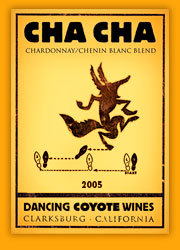 |
|
Wine Details
Price:
$10.99 per bottle
Description:
The Cha Cha blend is an equally great wine for those who love Chardonnay and for those who don't. This blend has all the attributes of a wonderful Chardonnay, without the over-oaked quality of so many, allowing the fruit flavor to dominate. (Update: Our 2006 Cha Cha is coming mid 2007!) 30% Chardonnay, 23% Albarino, 18% Verdelho, 12% Chenin Blanc, 9% Riesling, 8% Orange Muscat
|
|
|